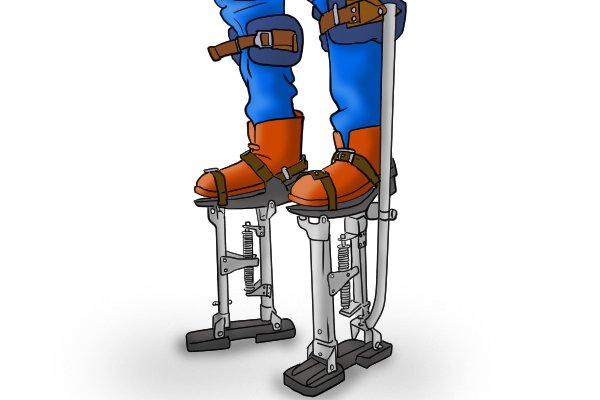Plastering can be a challenging task, especially when working on ceilings and high walls. However, using stilts can make the job much more manageable and efficient. By mastering the art of plastering with stilts, you can significantly improve your productivity and achieve professional results. In this guide, we will walk you through the process of using stilts like a pro to enhance your plastering skills.
Benefits of Using Stilts for Plastering
Before we delve into the techniques of using stilts for plastering, let's take a look at some of the benefits of incorporating stilts into your workflow:
Increased Mobility
- Stilts allow you to move around the work area with ease, especially when working on larger surfaces.
- You can access high walls and ceilings without the need for ladders or scaffolding, saving time and effort.
Improved Efficiency
- Working on stilts enables you to complete plastering jobs faster, as you can reach higher areas without constantly repositioning ladders.
- You can cover larger areas in a single pass, leading to a more uniform and consistent finish.
Reduced Strain on the Body
- Using stilts can help prevent back and neck strain that may result from bending or reaching overhead for extended periods.
- Stilts provide a stable platform for working at height, reducing the risk of accidents and injuries.
Choosing the Right Stilts for Plastering
When selecting stilts for plastering, it is essential to consider factors such as height, weight capacity, comfort, and adjustability. Here are some key features to look for in plastering stilts:
Adjustable Height
- Opt for stilts with adjustable height settings to customize the platform to your preferred working height.
- Make sure the height adjustment mechanism is easy to use and secure to prevent accidental slippage.
Weight Capacity
- Choose stilts that can support your body weight comfortably, taking into account the weight of your tools and equipment.
- Check the weight capacity of the stilts to ensure they are suitable for your needs and provide a stable platform for plastering.
Comfort Features
- Look for padded straps, cushioned calf braces, and ergonomic design elements to enhance comfort during prolonged use.
- Consider additional features such as adjustable footplates and non-slip treads for added stability and support.
Mastering the Technique of Using Stilts for Plastering
Now that you have selected the right stilts for plastering, it's time to master the technique of using stilts like a pro. Follow these steps to improve your efficiency and precision when working at height:
Practice Proper Balance and Posture
- Stand upright on the stilts with your weight evenly distributed on both legs to maintain balance.
- Keep your back straight and your core engaged to minimize strain on your lower back and maintain stability.
Focus on Smooth Movements
- Move slowly and deliberately when walking or shifting your weight on the stilts to avoid sudden jerky motions.
- Practice turning and maneuvering on stilts in a controlled manner to improve your agility and coordination.
Use Proper Tools and Techniques
- Choose the right plastering tools, such as trowels and floats, to achieve a smooth and even finish on walls and ceilings.
- Apply consistent pressure and motion when plastering to create a uniform surface without bumps or imperfections.
Tips for Safe and Efficient Plastering on Stilts
Working at height on stilts requires caution and attention to safety. Follow these tips to ensure a safe and efficient plastering experience:
Inspect Your Stilts Regularly
- Check the condition of your stilts before each use, looking for signs of wear and tear or damage that may affect stability.
- Ensure that all adjustment mechanisms are secure and functioning correctly to prevent accidents or injuries.
Secure the Work Area
- Clean and clear the work area of debris, obstacles, and tripping hazards that may pose a risk when working on stilts.
- Use caution around electrical wires, lighting fixtures, and other overhead obstacles to avoid accidental contact.
Stay Focused and Alert
- Avoid distractions and maintain your focus on the task at hand when working on stilts to prevent accidents due to loss of concentration.
- Take regular breaks to rest and refocus to avoid fatigue and ensure consistent and precise plastering results.
By following these guidelines and practicing regularly, you can master the art of plastering with stilts like a pro. Incorporating stilts into your workflow can improve your efficiency, mobility, and overall performance, leading to professional-quality results in your plastering projects.
